This is the fifth of a series of articles on the 2009 San Francisco International Film Festival, held April 23-May 7. Part 1 was posted May 20; Part 2 was posted May 22; Part 3 was posted May 25; Part 4 was posted June 1, 2009.
Certain film writers and directors continue to drift along in fairly inconsequential waters.
Japanese writer-director Hirokazu Kore-Eda (born 1962 in Tokyo) has made six feature films since 1994, including Maborosi, After Life and Nobody Knows. Generally distinguished by their slow pace, understatement and muted tones, Kore-Eda’s films explore regret, grief, nostalgia and various intimate relations.
On the film festival circuit, Kore-Eda is highly thought of. Still Walking, for instance, screened in San Francisco, was selected as the best film at the Toronto film festival in September 2008 in a poll of film critics and bloggers surveyed by indieWIRE. The San Francisco festival catalogue declares that the Japanese director is “now firmly established as a contemporary master of cinema at its most lyrical and emotionally satisfying.”
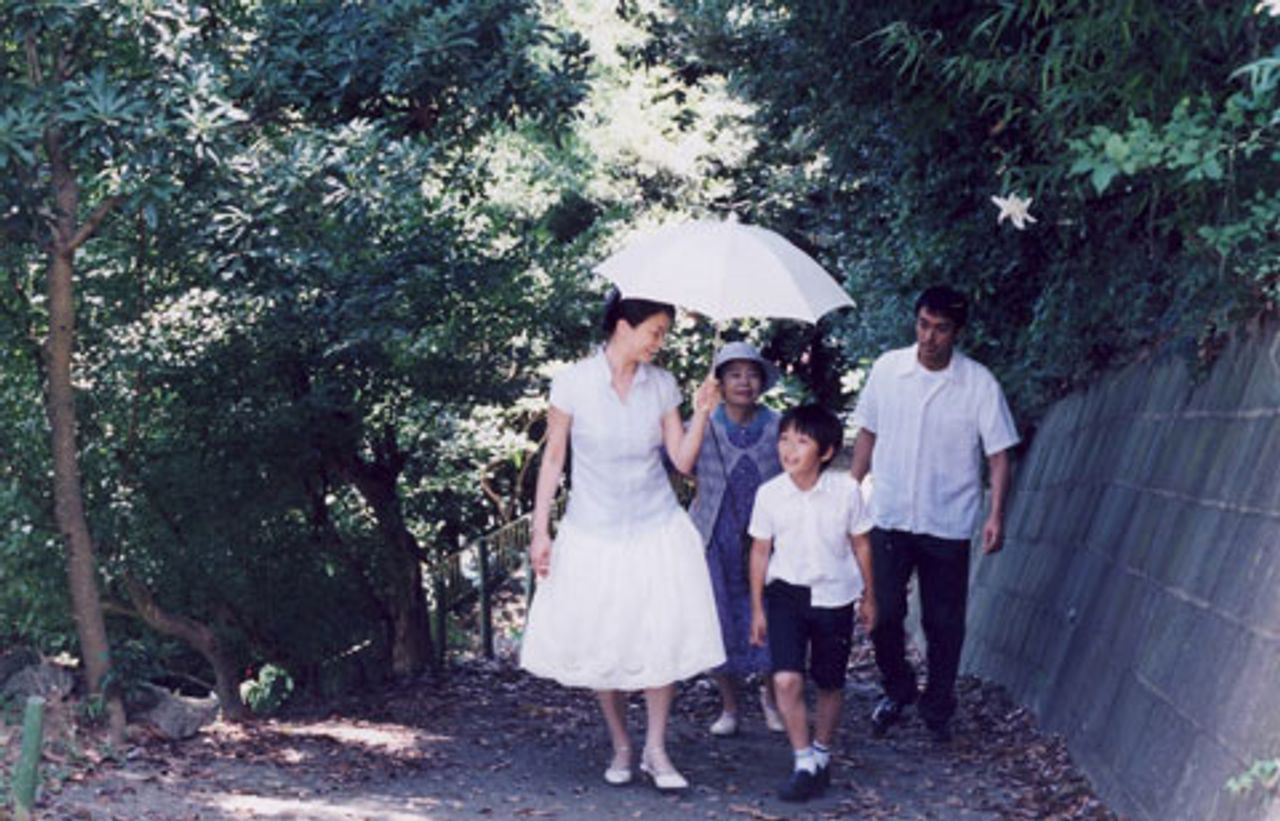 Still Walking
Still WalkingI don’t share this high opinion of Kore-Eda, or Still Walking in particular. In my view, the films, including this one, are dull and unenlightening. At present, art film critics too often mistake a self-consciously subdued (or simply non-committal) approach to life for a serious one. I haven’t learned much from Kore-Eda’s films—certainly next to nothing about the changes in Japanese society—except that the writer-director is a bit impressed with his own sensitivity.
At the public screening in San Francisco, the filmmaker announced that Still Walking was a “very private, very personal” film. One was tempted to say, “All right then, we’ll all leave, and you can watch it undisturbed.”
The film follows one day in the life of the Yokoyama family. An adult son and daughter, with spouses and children (a step-child, in one case) in tow, pay a visit to their elderly parents on the fifteenth anniversary of the death of their older brother, who died in an accident. The dead son was the great pride and hope of the family.
The surviving brother and his father are estranged; the old man doesn’t approve of his son’s profession. The mother, a bundle of energy and emotion, wants everyone to get along. There is a visit to the grave, a meal, a few recriminations, various tensions and other apparently trivial goings-on.
In fact, very little of interest actually does go on. We don’t feel much for any of these people. The father and mother are largely clichés. The attempt to recreate “ordinary life” is terribly forced, so that the film never truly breathes. The director is constantly tugging at our sleeves and reminding us to appreciate his delicacy and subtlety, and this is simply wearing.
The reader may think I exaggerate. These comments from the “Director’s Statement” give some flavor of it. After directing our attention to the fact, that unlike “in an American TV drama, nothing of consequence happens” during the family reunion in his film, Kore-Eda goes on to assert, “Yet, over the course of their day, as deceptively tranquil as a calm sea, the tide flows in, then out and wavelets constantly ripple the surface.... In this film I have contemplated and portrayed the seemingly minute yet significant wavelets that ripple throughout the course of our long lives....
“I have focused on the premonitions and the reverberations of life. Because I believe that is precisely where the essence of life can be found.
“Because Still Walking started from a place of regret, I was determined to make it a film brimming with life....
“In this film, more than in my others, I believe I have managed to portray human beings and our behavior in a specific and nuanced way.”
Leaving aside the considerable claims he makes for his work...presenting men and women as the sum total of their immediate family relations and behavioral tics does not get at the entire truth of their lives, it may not get at the important truths at all. Kore-Eda’s “wavelets” are foam, and not all that enthralling a foam, on the surface of life.
The “trivial” and the “ordinary” can be made to reveal significant facts and relations, if there is an orientation toward the deeper currents, inevitably social and historical currents, and the manner in which they manifest themselves in everyday life. This is the result many major artists have striven for over the past 150 years. Kore-Eda’s idea of depth and the “secret” element in life is exhausted by drawing out certain long-term family resentments, fears or hidden struggles (“the main character’s anxiety over his parents’ aging,” or “the negotiations over a grandchild between a bride and her mother-in-law”).
In 2002, I wrote about his Distance: “One still has the overriding sense that Kore-Eda is attempting to be impressive, rather than to illuminate. He is obviously gifted, but there is no clear sign that he has a grasp of contemporary society. His insights are scattered, inflated. The result is something cold and abstract.” I stand by the comment.
Summer Hours from Assayas
Olivier Assayas (born 1955) is a French filmmaker and another product, or victim, of a difficult cultural period. The director began making feature films in the late 1980s and came to prominence in the mid-1990s. Although intelligent, his films generally have lacked spontaneity and go out of their way to be socially indifferent.
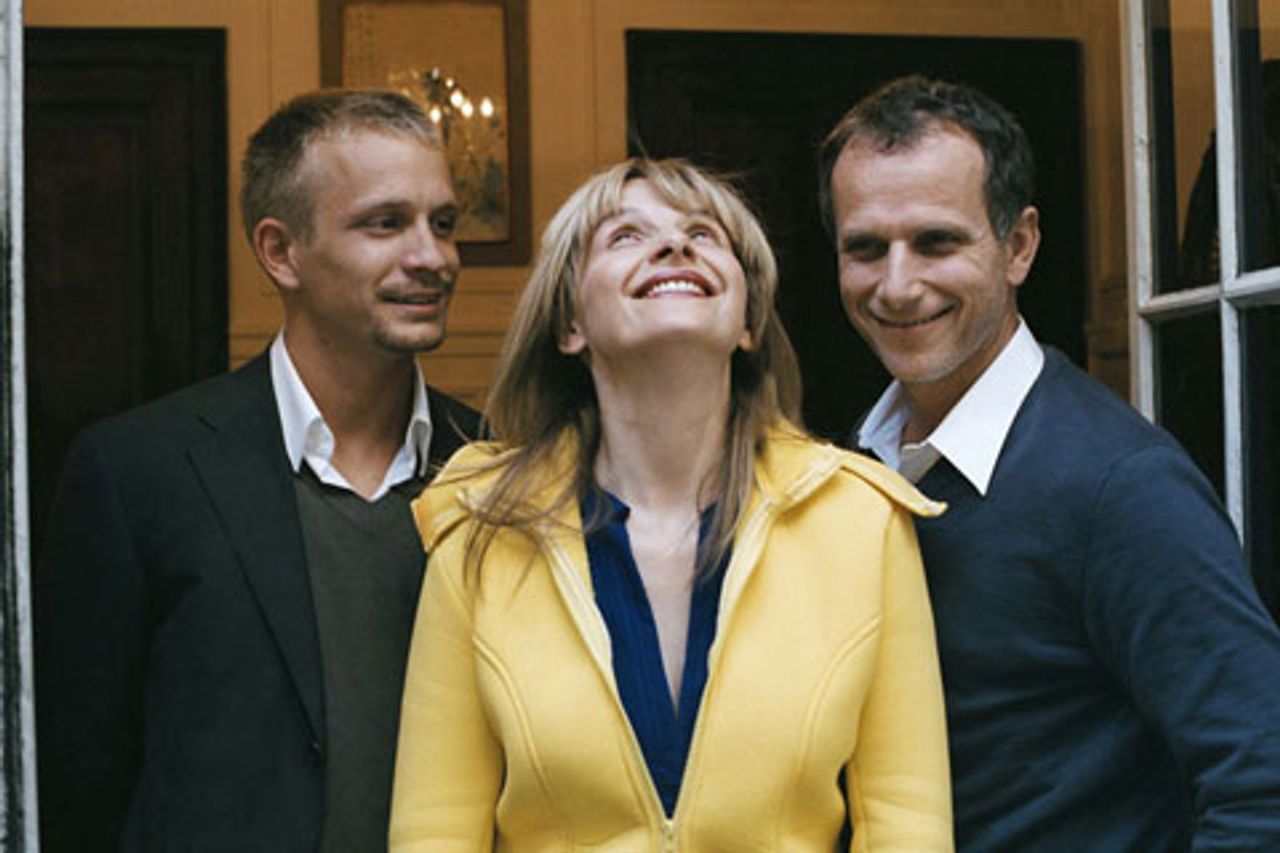 Summer Hours
Summer HoursSummer Hours treats a French family faced with a painful situation. When their mother dies, Adrienne (Juliette Binoche), a designer now living in New York, Frédéric (Charles Berling), a university professor in Paris, and Jérémie (Jérémie Renier), a business executive in China, must decide what to do with the family home and their mother’s art collection, including the works of her celebrated painter uncle.
Frédéric, who was closest to his mother and to whom she gave instructions about the disposal of her worldly goods, assumes the siblings will keep the house and its contents. The others, however, propose to sell everything, for financial and practical reasons. In the end, this they do, donating some of the art work to a museum (for tax reasons) and selling the rest. His brother and sister departed (more or less for good) overseas, Frédéric and his wife go to see some of the family’s donated pieces on public display. He tries not to be sentimental, but it is upsetting, the definitive end to a chapter in his life.
In the final scene, Frédéric’s teenage daughter and her friends are having a final bash at the family house, soon to be handed over to the new owner. The girl sheds tears, telling a friend, “My grandmother’s dead, the house is sold.”
Summer Hours is competently made, and there are affecting moments, with Chekhovian overtones, but the concerns are narrow and so is the focus, studiedly. The trend Assayas belongs to, along with Kore-Eda and numerous others, is attuned to personal anxiety and dysfunction within the general framework of remarkable social complacency.
Everyone has the right to make films on whatever basis he or she chooses. But there are artistic consequences. Marxists would argue that the greatest source of psychological tension and trauma is objective change, changes in underlying economic and social relations.
When Assayas turns to the present situation in France, he proves unable to go beyond meager impressions and assertions. The director expresses his hostility in an interview to “modern executives” who “identify with Anglo-Saxon free-market culture and its values.... They scorn their own history and, deep down, their own identity. I’m very skeptical about this development, which seems wrong to me.”
Assayas complains, “It is no longer a question [for most people] of fighting to possess family heritage, but rather knowing how to get rid of it.”
The director and many of his generation in the French film industry rejected political engagement—they were “beyond all that.” These clever youngsters saw through (in other words, thought they saw through) everything, repudiated both Left and Right, only the personal and intimate concerned them, etc. In practice, this simply meant that prevailing ideology, in one form or another, was accepted and imbibed uncritically.
Hence, the director’s proposed struggle to “hold onto what we’ve acquired over time,” in the face of the impersonal, globalized “movement of merchandise and money”: a conception that leaves out important social dimensions. French bourgeois culture, “acquired over time,” includes many things, not all of them attractive: Corot and Flaubert, art nouveau and the mansard roof, but also the Catholic Church and national chauvinism, the history of Vichy, more than a few colonies or ex-colonies, the torture and murder of Vietnamese and Algerians. One has to be a little more selective, a little more “political.”
How is the culture of the globalizing, money-grubbing “modern executive” to be opposed? By the nostalgic defense of the national heritage and identity? That doesn’t seem promising, to say the least. The diffuse, unformed conceptions have something to do with the tepidness of Assayas’s artistic products.
Summer Hours is less boring than Still Walking, because more does happen and the performers are more dynamic, but the films are operating on the same general aesthetic plane. Both have pleasant images, especially of trees and parks and gardens in the summer. No one could object to such images, which are soothing, but a tree in the breeze is perhaps not the most challenging subject.
More French films
35 Shots of Rum by Claire Denis is another subdued film that critics admire. I found this dull too, and uninspiring. A black commuter train operator in Paris, Lionel (Alex Descas), who has lost his wife, lives with his daughter, Jo (Mati Diop), a university student, in an apartment. In the same building reside Gabrielle (Nicole Dogué), who has eyes for Lionel, and Noe (Grégoire Colin), a self-consciously “mysterious” young man, who has an interest in Jo.
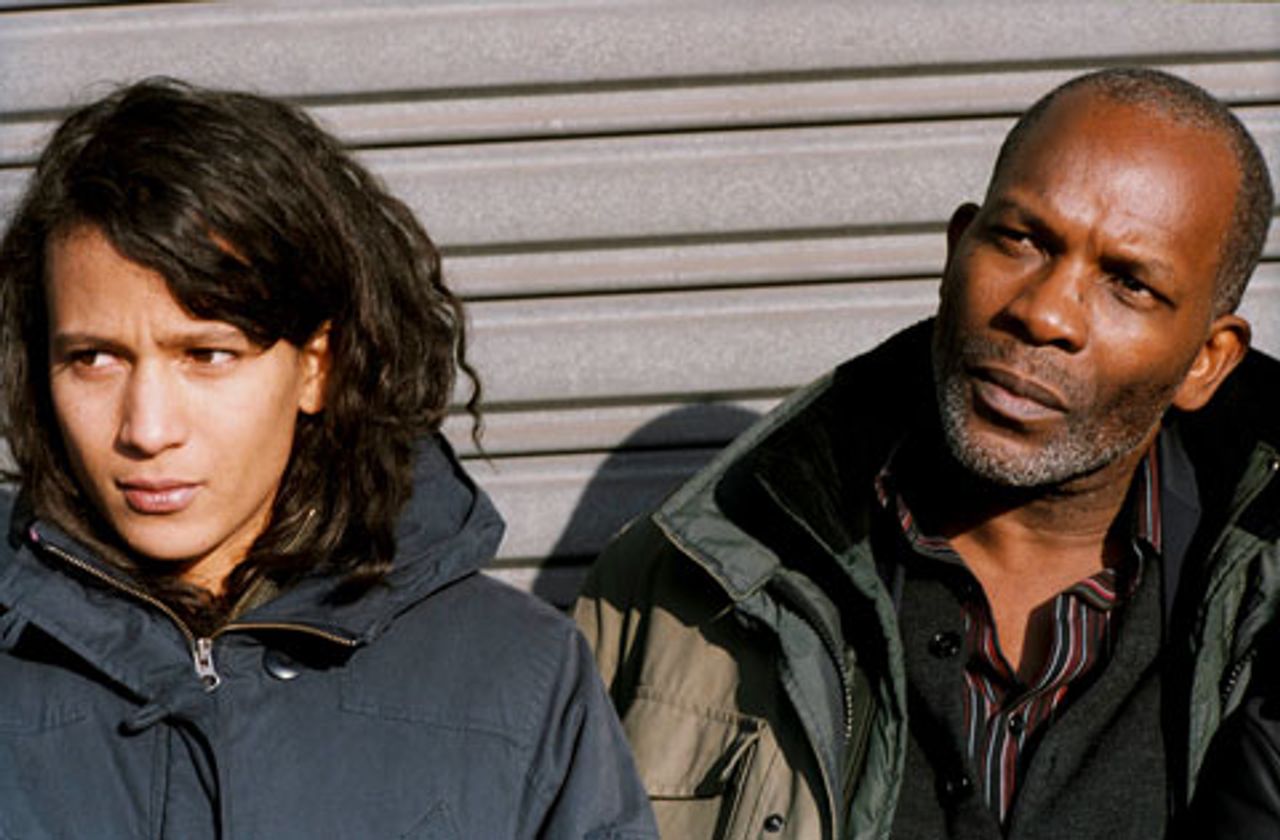 35 Shots of Rum
35 Shots of RumMuch of the film takes place at night. There are pleasing images here of elevated trains and cars, and windows lit by television screens. But not much else. Father and daughter are tightly, perhaps too tightly, tied together. (He: “Don’t feel you need to look after me...think of yourself.” She: “You’re getting rid of me?”)
One of Lionel’s co-workers is depressed in the face of retirement. (Lionel: “I thought you’d made yourself scarce.” René: “Leave, for where?” Lionel: “I don’t know. Far away, somewhere.... Got any plans?” René: “Plenty.” Except he obviously doesn’t, and meets a tragic fate.)
Various possible relationships loom, but little comes of any of it. Presumably the father and daughter must separate. The notes I took during a viewing of the film are not sympathetic. For example: “After only 10 minutes—preciousness, triviality, self-involvement, tedium!” And later: “Who was the film director that first got it into his or her head that watching mundane details of life represented ‘serious’ cinema? What a bore!” And farther on: “Everyone’s obscurely depressed and unhappy and self-centered.”
One of the few bright spots in 35 Shots of Rum is a brief appearance by Ingrid Caven, actress and cabaret singer, and one-time comrade in arms and muse of R. W. Fassbinder, the late German film director.
Catherine Breillat (Romance, Sex is Comedy, Anatomy of Hell, etc.) is a poor thinker and a poor filmmaker (and novelist). For a number of years, Breillat’s “maximum program” included pornography, rape, murder and assorted mayhem; her “minimum program,” merely her characters’ awkwardness, embarrassment and humiliation in a variety of situations. Unfair or not, my own reaction was: anyone who takes these foolish films seriously deserves to sit through them.
Breillat belongs (or belonged, it is difficult to say) to what has been called the “New French Extremism,” which critic James Quandt described as “a cinema suddenly determined to break every taboo, to wade in rivers of viscera and spumes of sperm, to fill each frame with flesh, nubile or gnarled, and subject it to all manner of penetration, mutilation, and defilement. (“Flesh & Blood: Sex and violence in recent French cinema,” ArtForum, February 2004)
Whether Breillat is motivated by the specific brand of politics she suffers from—“radical feminism,” or what have you—or by the simpler, perhaps more defensible, desire to make a big name for herself, or some combination thereof, she seems to aspire to be the most “transgressive” of the “transgressive,” with very little artistically or intellectually to show for it. To dream up the most disastrous series of psycho-sexual events is not the same as understanding anything about people and the world. Inevitably, like a Tarantino, when Breillat takes a break from “transgression,” her films grind to a halt and become wearisome.
Having reached the age of 60, or for other reasons, Breillat’s recent films are a little less spectacular, but no more artistically valuable.
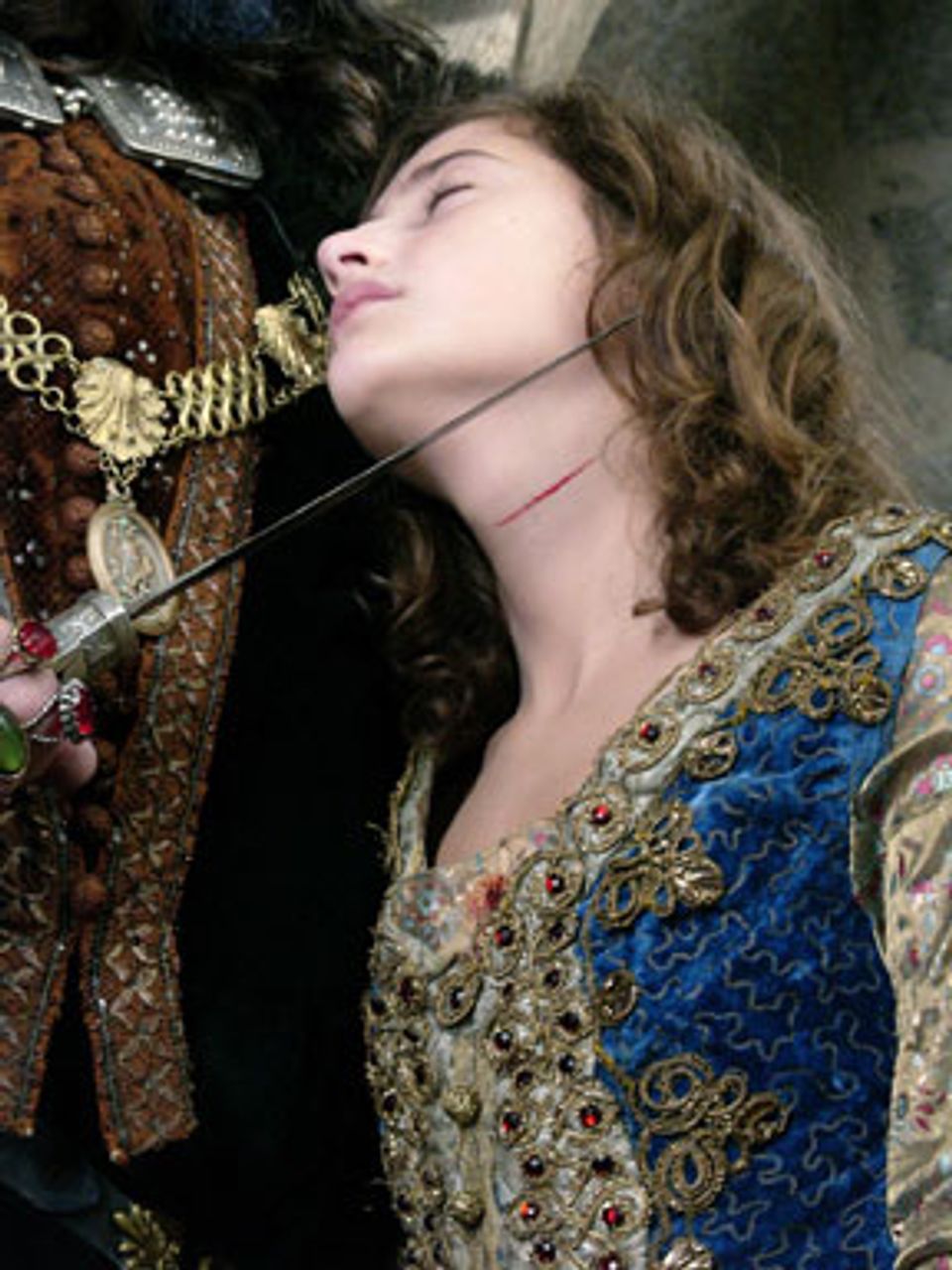 Bluebeard
BluebeardIn her version of Bluebeard, two young sisters, in an attic in the 1950s, read Charles Perreault’s 17th century fairytale aloud, about the nobleman who kills all his wives. The younger sister delights in terrifying her older sibling. The story is also acted out for our benefit: here are the mountainous and gloomy nobleman (Dominique Thomas) and his lively, virgin bride (Lola Creton), who ultimately foils him.
Breillat tells us in her “Note of Intent” that, as a little girl, she used to insist on reading the story to her older sister, an experience that would terrify the both of them. She goes on, “It’s not the story of the tale that is important here but its relationship with us as children.
“Why? Is it because Bluebeard is The Man who Kills Women.... All the other women except the youngest one, in other words me. The child who is reading. And isn’t this the fundamental, selfish and cynical relationship of childhood with life: knowing that we are powerless, that we depend on adults for everything, and yet drawing on our strength in the knowledge of our temporary immortality in relation to grown-ups. Knowing that we will live on after they disappear.”
The Bluebeard tale—the center of the piece!—is not “important,” which may help explain why it is so crudely and perfunctorily acted out, simply its usefulness as a means of driving home the “selfish and cynical relationship of childhood with life,” a dubious and shallow conclusion. This helps sum up an entire “extremist” school: unconvincingly done drama used as a pretext to establish cheaply misanthropic and sensationalist themes, and, incidentally, make names and careers for the directors involved.
A few words about several other movies
In the Loop, from Britain’s writer-director Armando Ianucci, is a confused, occasionally very funny satire about politics and war. A very junior British cabinet minister, Simon Foster (Tom Hollander), gets into hot water with a series of ambiguous, ill-considered remarks about the possibility of war in the Middle East, a prospect favored by both the US president and the UK prime minister. (Simon first describes such a conflict as “unforeseeable,” then reverses field under pressure and tells the press that “Britain must be ready to climb the mountain of conflict.”) The prime minister’s maniacal, foul-mouthed director of communications, Malcolm Tucker (Peter Capaldi), is his particular nemesis.
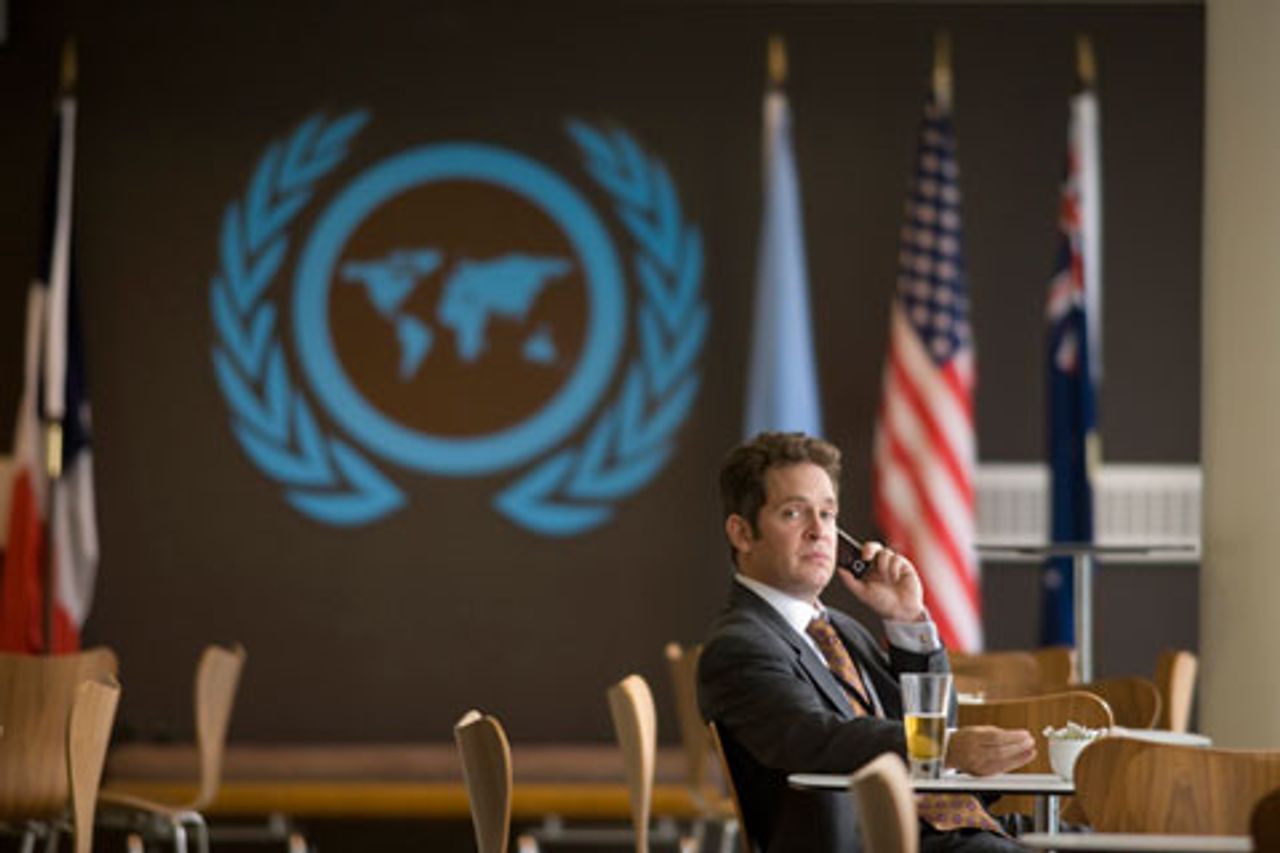 In The Loop
In The LoopSimon and his hapless assistant Toby (Chris Addison), for one convoluted reason or another, end up on a fact-finding mission to Washington, where they find themselves inserted into a battle between rival factions within the US state apparatus. James Gandolfini appears as a “dove” of a general, and Mimi Kennedy, a “moderate” in the State Department. The president’s henchmen are out and out warmongers.
Unfortunately, In the Loop gets in way over its head. If its makers had stuck to the absurdities of parliamentary politics and ministerial protocol, they would have been fine. Hollander, Addison and Gina McKee, as Simon’s own sardonic and resourceful director of communications, are excellent, at times hilarious, but the American scenes are weaker, politically blunted and largely unfunny. Present-day geopolitics, and affairs in Washington in particular, is so surreal and swollen with threat that a certain type of essentially amiable humor, a product of and suitable for less convulsive times, simply falls short.
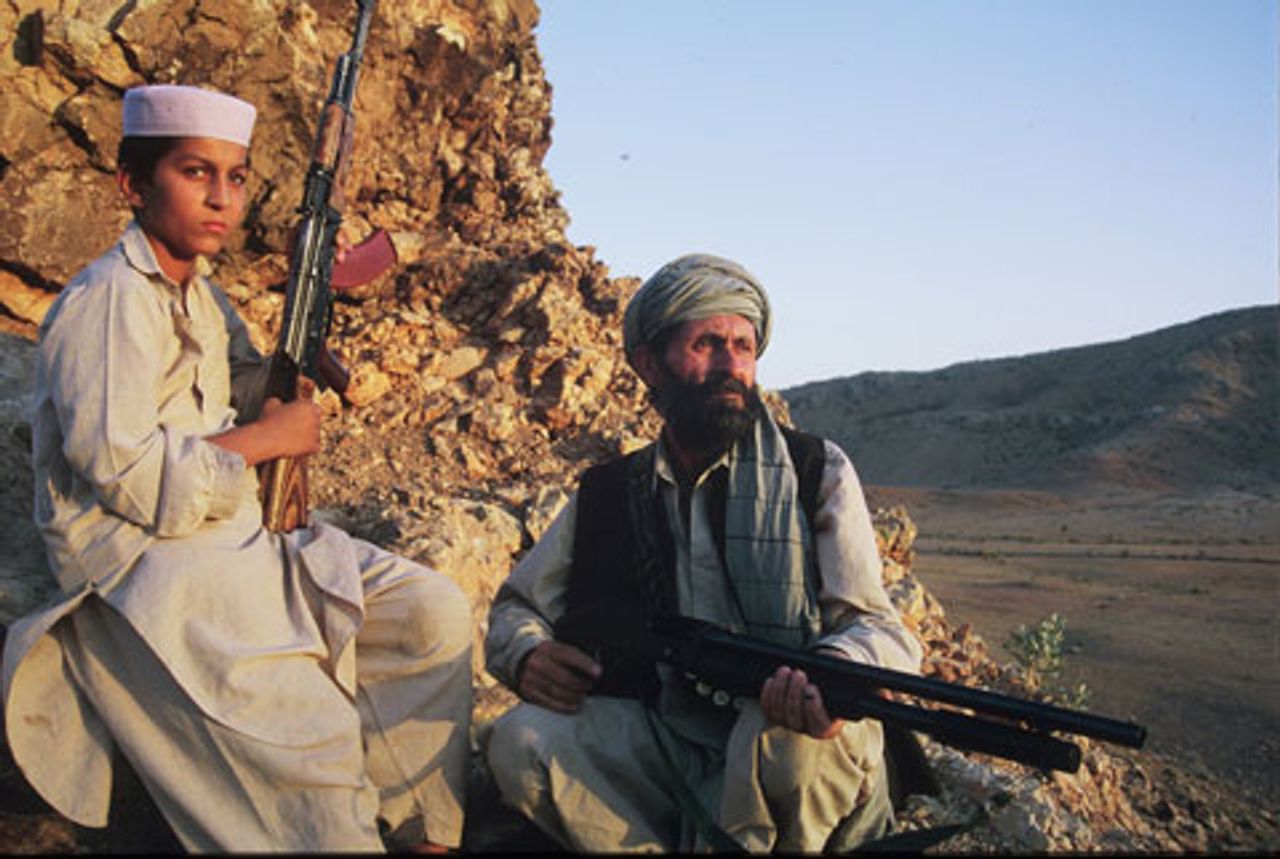 Son of a Lion
Son of a LionSon of a Lion is an odd, if perhaps well-intentioned film, done by an Australian writer-director, Benjamin Gilmour. Shot clandestinely in the North West Frontier Province of Pakistan, on the border with Afghanistan, the film is meant as a kind of tribute to the Pashtun people and a response to anti-Muslim bigotry.
In the village of Darra, where weapon-making is the most common profession, a widowed gun maker, a veteran of the struggle with Soviet forces, expects his son, Niaz, to follow in his footsteps. Niaz, however, wants to go to school. Through his uncle, he has the opportunity to travel to the city of Peshawar. Tension builds between father and son; the latter says, “You and I see the world differently. I want to study.” The uncle presses for Niaz to be allowed an education. This part of the plot is rather elemental.
The conversations between Niaz’s uncle and his friends, Afghan refugees, some of which may have been written or suggested by local residents themselves, contain the film’s most convincing moments. The dialogue goes something like this: “They said Saddam Hussein had bombs, but he had nothing.” “They just wanted to invade Iraq....” “They needed an excuse to invade!” “No leader can survive if he’s not pro-American.”
The group of men scoff at the Afghan elections, the “candidates are mostly warlords, with hands drenched in blood.” President Hamid Karzai “is a puppet.” The country has been ruined “for 25 years.” They worry that Afghans are considered “scary and dangerous,” depicted in the West as “inhuman, animals, suicide bombers.” “Muslims now have a bad name in the world.” Osama bin Laden, they remark bitterly, was a “freedom fighter” when he fought the Russians, he’s a “terrorist” when he turns against the US. “We work from dawn to dusk just to survive, and when we wake up we read about our acts of terror.”
Gilmour, who risked life and limb, and the lives and limbs of the villagers who aided him, told an interviewer that his motive was “to try to balance-out the tainted perception people in the West have of Muslims as a whole after the events of September 11.... Being a great admirer of film as one of the greatest modern-day mediums for influence and change, I thought this would be an excellent way to carry out my goal of opposing the Islamophobia I saw around me.”
Perhaps an honorable intention, but the film is not artistically or ideologically challenging enough to make a great dent on popular consciousness. Like so many contemporary works, Son of a Lion avoids historical generalization and complexity, concentrating instead in this case on the admirable qualities of the people of Darra. However, because the film shies away from tracing out the background to the current tragedies, including the long history of imperialist intervention, the warlike, gun-making population seems in part responsible for its own conditions. “If only these people would stop making weapons and just educate their children...!” This is the theme the film inevitably conveys.
It is not so much “a rare glimpse into the Pashtun psyche,” in Gilmour’s phrase, that we need, first and foremost, but what would be even rarer: an honest and painstaking glimpse (or more) into the history of the region and the latter’s place in current world politics.
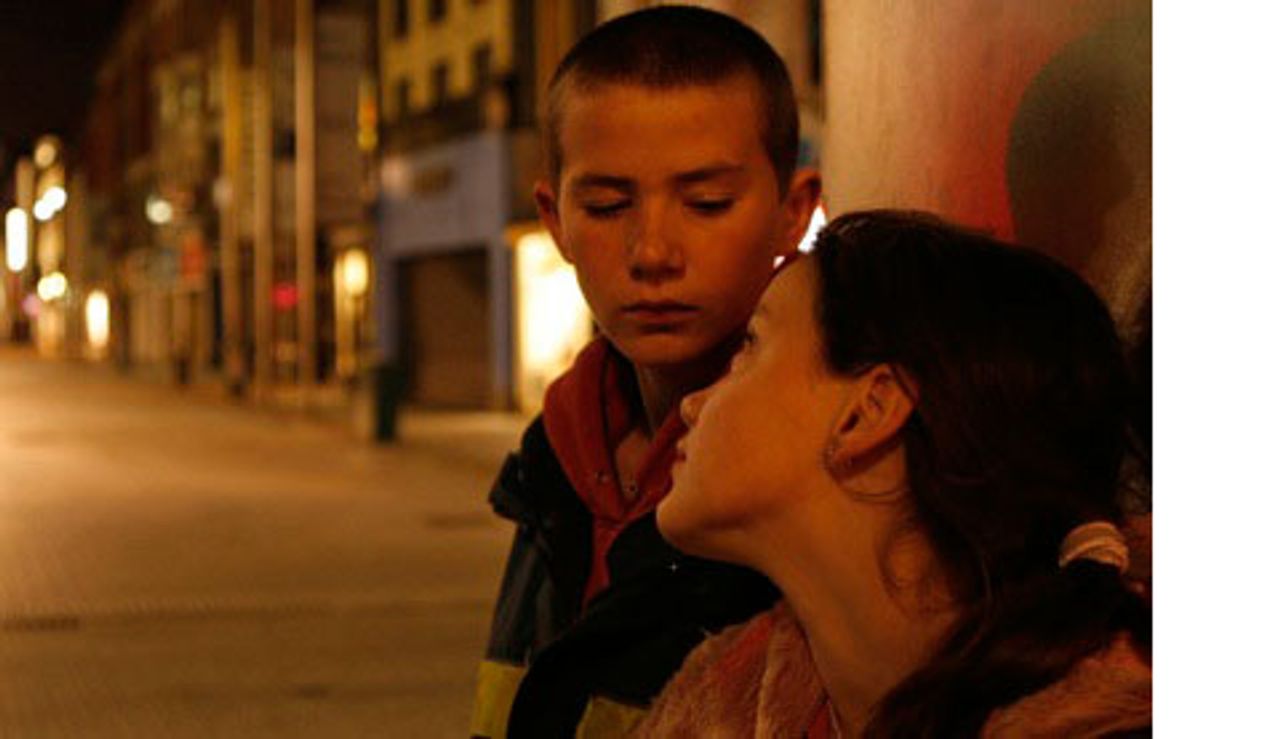 Kisses
KissesKisses from Ireland, written and directed by Lance Daly, follows two young teenagers, Dylan (Shane Curry) and Kylie (Kelly O’Neill), abused and unhappy at home, who flee their housing estate and plunge into the center of Dublin, in search of the boy’s older brother. They encounter bargemen, buskers, prostitutes, social workers and more during the course of a night.
Although one senses something real and human off in the distance, the film has unfortunate influences. It insists on perpetual ferocity and an “in your face” attitude, the outcome being a (quasi-inadvertent) glorification of backwardness, on the one hand, and an indictment of the teenagers’ families, on the other. If Daly would stop trying so hard for a moment and look at things more carefully and reflectively, rather than trying to impress us. ...
Some of the same problems, again and again.
Concluded
